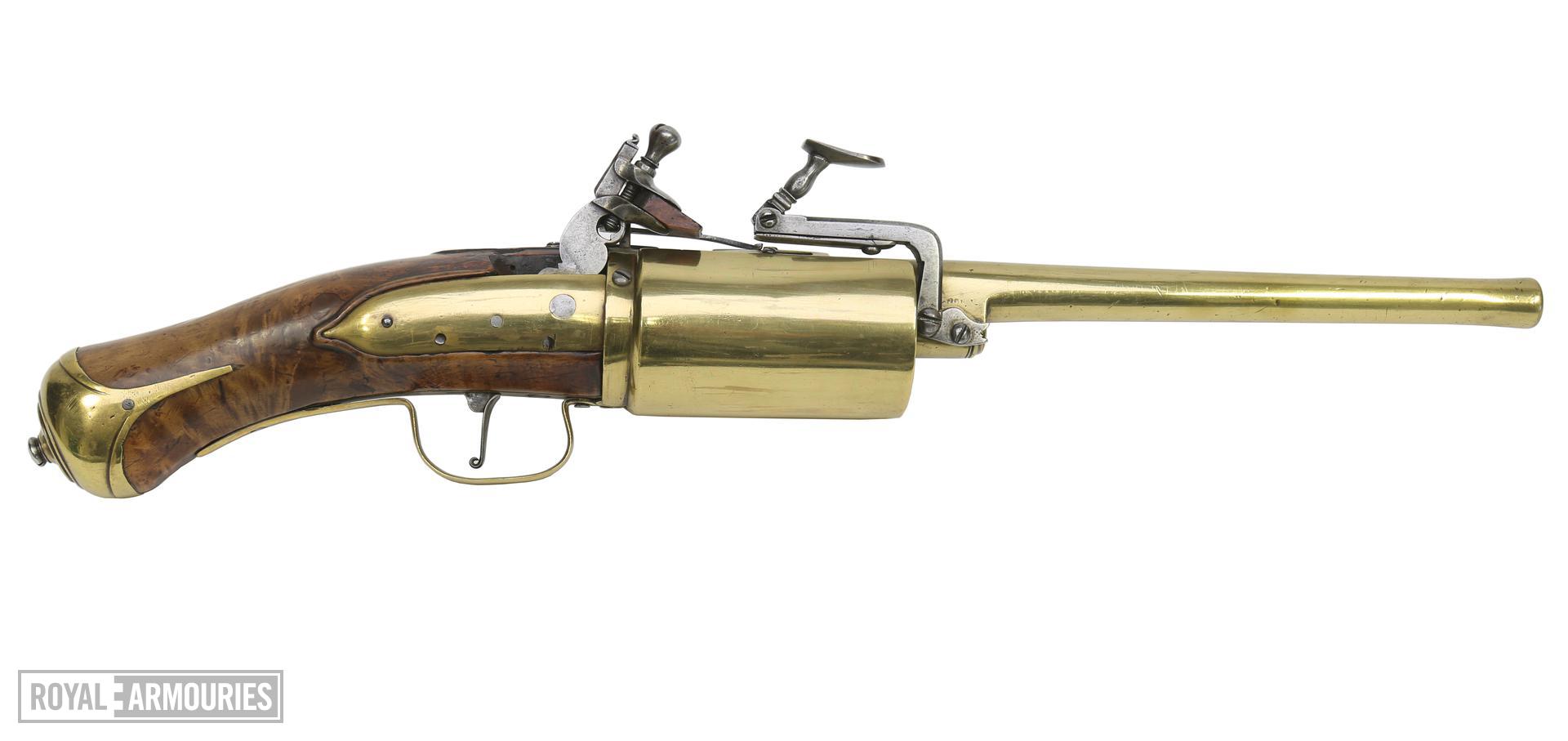- cross-posted to:
- forgottenweapons@lemmy.world
- cross-posted to:
- forgottenweapons@lemmy.world
cross-posted from: https://lemmy.world/post/12328130
Technically of Snaphance configuration, but made well into the ‘true’ flintlock era. The separate steel and pan arrangement and back-action lock are dictated by the use of a revolving cylinder and especially the design choice of having priming pans integrated into said cylinder. The weapon is utilitarian in appearance and is largely devoid of engraving or other embellishment, but the superior craftsmanship employed is self-evident. Metalwork is brass save for the iron lock assembly, trigger, belt-hook, and of course the necessary screws and pins. It is stocked, in burr (burl) walnut, after the fashion of a period horse pistol, albeit with the more massive proportions required by its large and heavy brass cylinder. Swamped, unrifled barrel.
A sheet brass shroud covers the revolving cylinder and is screwed onto the lock-frame, no doubt to prevent inadvertent movement of the pan covers as suggested by Norman and Wilson (1982, 80), at least in part. It may also have been an aesthetic choice, and would further have have afforded a safe place for two-handed support should the user tire. Another possibility is that it was intended as a flash-shield to reduce the risk of ‘chain fire’, that is, the communication of flame from the ignited chamber to one or more of the others.




